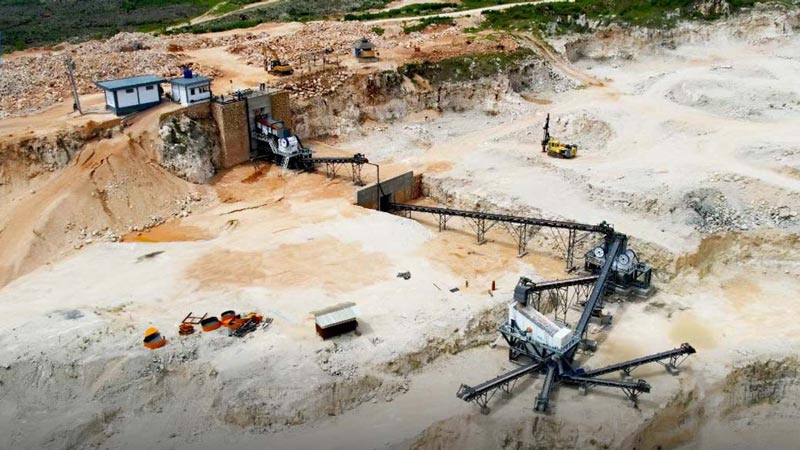Latin America’s infrastructure pipeline—from transcontinental highways to urban housing and energy projects—continues to expand, but logistics, terrain, and regulatory diversity vary dramatically by country and even by province. These realities make plant reliability and agility far more than nice-to-haves; they are decisive advantages. A robust and flexible design helps an aggregate crusher plant deliver consistent output despite dust, heat, humidity, voltage fluctuation, and variable feed quality. At the same time, modularity and fast setup shorten time to revenue, crucial when project windows are tight or capital is constrained. This article explains how to architect a resilient stone crusher plant that thrives in Latin American conditions, why flexibility directly lifts ROI, and where a mobile stone crusher plant can outperform stationary configurations.
Market Context And Operating Realities In Latin America
Across Mexico, Colombia, Peru, Chile, and Brazil, quarry operators and EPC contractors face uneven infrastructure, long supply chains, and permitting that may limit heavy civil works. Power quality and telecom coverage can be inconsistent at remote sites, and haul roads may deteriorate in rainy seasons. These constraints punish fragile systems and reward designs that are structurally strong, logistically nimble, and digitally visible. In such contexts, the most competitive aggregate plants(planta de agregados) combine high-strength chassis, containerized transport, independent functional modules, and centralized, data-rich controls.
Why Robust And Flexible Design Matters
Structural Robustness Protects Uptime
A high-strength frame that outperforms standard structural steel improves vibration damping, alignment retention, and fatigue life. When crushers, screens, and conveyors sit on a rigid base, you reduce micro-misalignment that otherwise accelerates bearing wear and belt tracking issues. Robustness is a quiet multiplier: fewer stoppages, steadier product gradation, and lower maintenance inventory.
Flexible Logistics Accelerate Deployment
Container-ready dimensions and foldable modules enable ocean shipping and easy highway moves without special permits in many jurisdictions. This compresses mobilization schedules and lowers freight costs. On arrival, independent modules—feeder, jaw, cone, screen, and product conveyors—can be positioned and commissioned in parallel, moving you from delivery to first sale faster.
Digital Visibility De-Risks Operations
Centralized electrics with PLC control, remote monitoring, and condition-based alerts raise reliability and make distributed teams more effective. Managers view production rates, energy draw, and alarm history without standing on the catwalk. Predictive maintenance (vibration and temperature trends, motor current signatures) catches emergent issues before they become crises.
Core Design Principles For A Latin American Aggregate Plant
High-Strength Chassis For Harsh Terrain
Design the main skid and subframes with elevated yield strength material to increase stiffness and reduce resonant amplification. The payoff is lower vibration transfer to rotating components, fewer cracked supports, and better alignment for critical shafts. Over a multi-year horizon, these small deltas translate into noticeably higher availability for any aggregate crusher plant.
Containerized Transport And Fast Setup
Where possible, keep major modules within 40-ft container envelopes and incorporate lifting lugs and forklift pockets. Use quick-connect hydraulics and plug-and-play cable sets with keyed connectors to prevent wiring errors and reverse rotation. In markets where foundations slow projects, deploy steel sleepers, ballast blocks, or adjustable jackstands to avoid concrete early in the schedule.
Independent Functional Modules
A plant that treats each unit—scalping, primary, secondary/tertiary crushing, and screening—as an independent module can be installed or swapped without tearing down the whole line. This approach is ideal for phased capacity growth: start with a primary and screen, then bolt on a cone and closed-circuit screen when demand rises. It is also ideal for contractors rotating assets among jobs.
Centralized Electrics And IoT Monitoring
Specify a central MCC with PLC/HMI and dual-mode operation: touch panel and hardwired pushbuttons. Integrate VFDs for conveyors and screens to fine-tune load sharing and reduce spillage. Layer in remote access via wired, Wi-Fi, or 2G/3G/4G networks, acknowledging that signal quality varies across Latin America. Alarm on phase loss, poor grounding, and abnormal current draw to protect motors and avoid reverse rotation.
Where Mobile Plants Win
Short Project Windows And Multiple Sites
A mobile stone crusher plant(planta chancadora movil) shines when contracts are measured in months, not years. Track- or wheel-mounted units roll on and off sites with minimal civil work, which helps contractors serving road maintenance programs or pipeline corridors. Mobility lowers idle time and raises asset utilization because the same fleet can chase work across regions.
Urban Recycling And Permit Constraints
In dense cities, permitting permanent foundations can be slow. Mobile units operate on rented yards for recycled concrete and asphalt, producing base course and manufactured sand without anchoring capital to one place. Noise and dust systems on modern mobile lines make compliance easier while keeping neighbors on your side.
Remote Quarries With Seasonal Weather
In mountainous or rainforest environments, rainy seasons can disrupt access roads. Mobile configurations let you position the stone crusher plant(planta chancadora) close to the face during dry months and retreat to firmer ground as conditions change, keeping haul distances—and fuel burn—in check.
Performance, Cost, And ROI Levers
Uptime And Throughput
Robust frames and stable electrics reduce unscheduled stops, boosting net operating time. Even a few extra hours per week translate into hundreds of tons per month—often the difference between meeting and missing contracts.
Energy Efficiency
VFD-controlled conveyors and properly tuned screen speeds cut kWh per ton. Balanced loading across stages avoids choke points that waste energy and damage liners. Over a year, small efficiency gains in a stone crusher plant accrue into meaningful OPEX savings in countries with high industrial tariffs.
Maintenance And Parts
Predictive maintenance informed by sensor data schedules service during planned lulls, not peak production. Standardized, modular components shrink the spare parts list and speed up customs clearance—important where cross-border logistics are slow.
Capital Flexibility
Containerized delivery, foundation-light installation, and modular growth reduce initial outlay and allow staged investment. This is particularly valuable for mid-sized producers and contractors bidding on variable workloads.
Practical Configuration Guidance
Start With A Solid Primary
Match a heavy-duty feeder and jaw to the blast pattern and loader bucket size. Ensure the chassis under the primary is braced for impact loads and has generous maintenance access.
Close The Loop Gradually
If market demand justifies finer products, add a cone and a return conveyor to create a closed circuit. Make sure your control system scales smoothly so the aggregate crusher plant logic does not need a rewrite with each module addition.
Engineer For Mobility From Day One
Even if the first site is long term, adopt container-friendly dimensions, foldable walkways, and quick electrics. When the next contract arrives in another province, your move will be measured in days, not weeks.
Future Trends To Watch
Automation will deepen, with AI-assisted set-point optimization that balances throughput, shape, and energy draw in real time. Battery-assisted or hybrid power for mobile fleets will grow where diesel costs and emissions rules tighten. More producers will capture and reuse process water and integrate dust suppression tied to conveyor load signals. Each trend amplifies the value of designing flexible, sensor-rich systems from the start.
Conclusion
In Latin America’s diverse and demanding operating environment, a robust and flexible plant design is a strategic advantage. Build on a high-strength chassis, ship in container-ready modules, commission fast with independent units, and manage intelligently through centralized controls and remote diagnostics. Whether you choose a stationary line or a mobile stone crusher plant, this design philosophy increases uptime, compresses deployment schedules, and improves total cost of ownership. Above all, it equips your aggregate crusher plant or broader stone crusher plant portfolio to keep pace with the region’s infrastructure ambitions—reliably, profitably, and on your timetable.


Comments
No comments yet. Be the first to react!